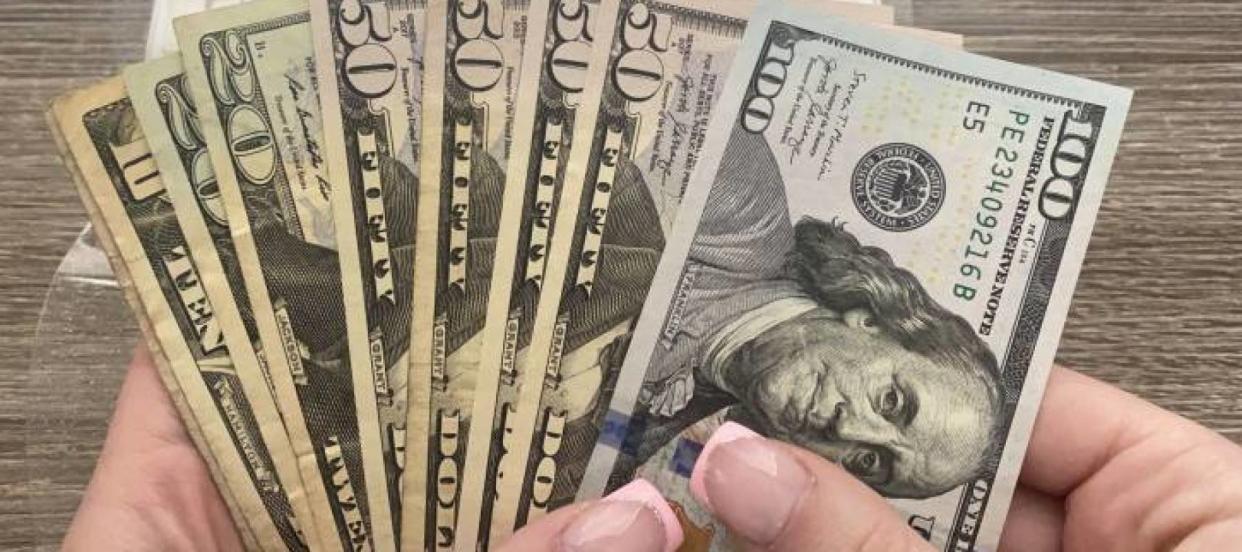A TikToker paid off $17,000 in credit card debt by cash stuffing — here are 4 more ways to make your money go further

Disclaimer: We adhere to strict standards of editorial integrity to help you make decisions with confidence. All links marked with an asterisk ( * ) are paid links.
With high inflation and costs of living, it's no surprise that people are relying more on their credit cards than ever before. In fact, total U.S. consumer credit card debt rose to $1.08 trillion near the end of 2023.
Lily W., a registered nurse who goes by @lilyrnbudgets on TikTok, has become a bit of budgeting phenom with her savy and honest ways to save money. While she's currently sharing her journey of attempting a "no-spend January," her budgeting story started gaining steam after she managed to pay off $17,000 in credit card debt by “cash stuffing” her income in 2019.
Don’t miss
Take control of your finances in 2024: 5 money moves to start the new year off strong
Robert Kiyosaki warns: ‘Cash is trash’ — Discover the power of diversifying with gold now
She bought an ‘unlivable’ house for $16,500 and made it her dream home — but you can reap the rewards of today’s expensive housing market without all the heavy lifting
You may have stumbled across this budgeting phenomenon on TikTok or YouTube. Influencers with immaculate acrylic nails count cash and file them into personalized cash binders, labeled with spending categories like groceries, rent and travel.
The idea is simple: You take your paycheck in cash and divide it into envelopes based on your budget for different needs, including both spending and saving. Say your grocery budget is $200 — if your bill goes over, you’ll be forced to put some items back.
While cash stuffing is a clever approach to financial discipline, not everyone is keen to spend all day counting cash. Here are a few other ways to save money and keep your costs under control as prices for everything continue to rise.
Consolidate your debt
Depending on how much interest you pay on your credit cards, a debt consolidation loan could save you thousands of dollars.
Try Credible*, a free online service that shows you the best lending options to pay off your credit card debt fast — and save a ton in interest.
Credible lets you compare lenders to find the lowest interest rates with just a few clicks. You can borrow up to $100,000 (with no collateral) at interest rates as low as 5.40% APR with autopay, and repayment schedules ranging from 24 to 84 months.
Checking rates on Credible* won't hurt your credit score, it’s totally free, and it will probably save you a bundle.
Compare rates on home insurance
As with food and gas prices, home insurance premiums are on the rise. The average yearly price of a home insurance policy in 2024 is $1,687— nearly 40% higher than it was 12 years ago.
If you want to get the best deal possible on coverage for your home, you’ll need to compare prices from multiple home insurance companies.
SmartFinancial* makes it easy to find the best rate available.
Just answer some quick questions* and they'll find you great deals online in minutes.
Read more: Retire richer — why people who work with a financial advisor retire with an extra $1.3 million
Save hundreds on auto insurance
If you haven’t shopped for a better rate* on your car insurance in more than six months, you’re probably overpaying.
BestMoney* makes comparing multiple insurance companies easier than ever. Just answer some quick questions and you'll be able to choose from multiple providers to find the best option for you.
In the same amount of time it takes to watch a cat video on YouTube, you could save almost up to $820 a year.
Try investing your spare change
Acorns is an investing service and savings tool rolled into one.
When you make a purchase on your credit or debit card, Acorns* automatically rounds up the price to the nearest dollar and places the excess into a smart investment portfolio.
Your spare change may not seem like much, but look at this math: $2.50 worth of daily round-ups add up to $900 per year — and that’s before your savings earn money in the market.
Sign up today* and collect a $20 bonus just for getting started. Where your savings go from there is up to you.
What to read next
Thanks to Jeff Bezos, you can now cash in on prime real estate — without the headache of being a landlord. Here's how
Find out how to save up to $820 annually on car insurance and get the best rates possible
Millions of Americans are in massive debt in the face of rising rates. Here's how to take a break from debt this month
This article provides information only and should not be construed as advice. It is provided without warranty of any kind.
